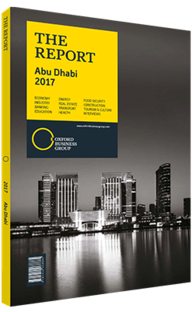Saif Saeed Ghobash, Director-General, Abu Dhabi Tourism & Culture Authority (TCA Abu Dhabi): Interview

Interview: Saif Saeed Ghobash
How can Abu Dhabi’s tourism sector insulate itself from the headwinds affecting global travel?
SAIF SAEED GHOBASH: The macroeconomic climate, including lower oil prices and the weakening of currencies, has undoubtedly impacted the sector. Likewise a strong dollar, to which the UAE dirham is pegged, has made the destination more expensive for some travellers from Europe. Tourism, like other sectors, is facing macroeconomic challenges, and so we have to find ways to remain competitive, namely by adding value and delivering high levels of customer service.
Therefore, our strategy will focus heavily on the emerging markets of China and India, as well as building up further traffic from the GCC and within the UAE. We have opportunities to expand our existing markets through closer collaboration and greater emphasis on partner marketing. We also see significant opportunity to stimulate demand through product diversification by focusing on emerging niches, particularly within the cruise tourism field. We will also stimulate investment in our tourism product and create an environment that attracts private sector expansion.
What specific steps are being taken to develop the cultural components of Abu Dhabi tourism?
GHOBASH: We have a strong case to make in the cultural realm, because we are in a unique position. The promotion and preservation of Abu Dhabi’s heritage and culture is part of the authority’s mandate, and as such is an ongoing activity. The vision we have for our cultural sector is to develop a thriving centre that engages and educates residents and tourists by highlighting the UAE’s rich national heritage, and by bringing global art, museums and music to the region.
We are classifying our cultural proposition into three main archetypes — historical heritage, through the 17 UNESCO World Heritage Sites in Al Ain, urban culture for Abu Dhabi city and its immediate surroundings, and traditional ethos for our Al Dhafra region. In our case, the wider emirate absorbs all three classifications, thereby differentiating Abu Dhabi. We will shortly start tracking visitations and awareness levels of all our cultural assets and events, to develop a better understanding of the markets we should be targeting and their preferences.
Where is there opportunity to expand and better coordinate the meetings, incentives, conferences and exhibitions (MICE) component ?
GHOBASH: Based on data from TCA Abu Dhabi and the Abu Dhabi National Exhibition Company (ADNEC), we believe the MICE segment can grow by 7% a year. A coordinated approach — bringing together the government and the private sector under a “One Abu Dhabi” scheme for bid developments — is essential, as is targeting conferences, congresses, and association meetings from sectors identified as pillars of Abu Dhabi Economic Vision 2030 such as education, health care and transport. The US will be important to this approach, as it is home to many industry associations. On the medical side, our Abu Dhabi Convention Bureau has recently signed a memorandum of understanding with the Emirates Medical Association and ADNEC which is set to underpin the UAE capital as a medical meetings hub. Abu Dhabi has now secured seven leading events within the sector, and these activities have established us as a leading medical events destination.
We will continue to target high potential markets — China as an example — to address a decline in length of stay. Europe is our key market for corporate and incentive groups, while India offers great potential for the weddings segment. Incentive business will continue to come from traditional markets in Europe and North America. We will continue to roll out the Advantage Abu Dhabi incentive programme, which acts as a catalyst for growth. The programme helps stimulate the sector by attracting business events to Abu Dhabi, and this helps extend direct and indirect economic benefits to Abu Dhabi entities across the entire tourism portfolio.
You have reached the limit of premium articles you can view for free.
Choose from the options below to purchase print or digital editions of our Reports. You can also purchase a website subscription giving you unlimited access to all of our Reports online for 12 months.
If you have already purchased this Report or have a website subscription, please login to continue.

